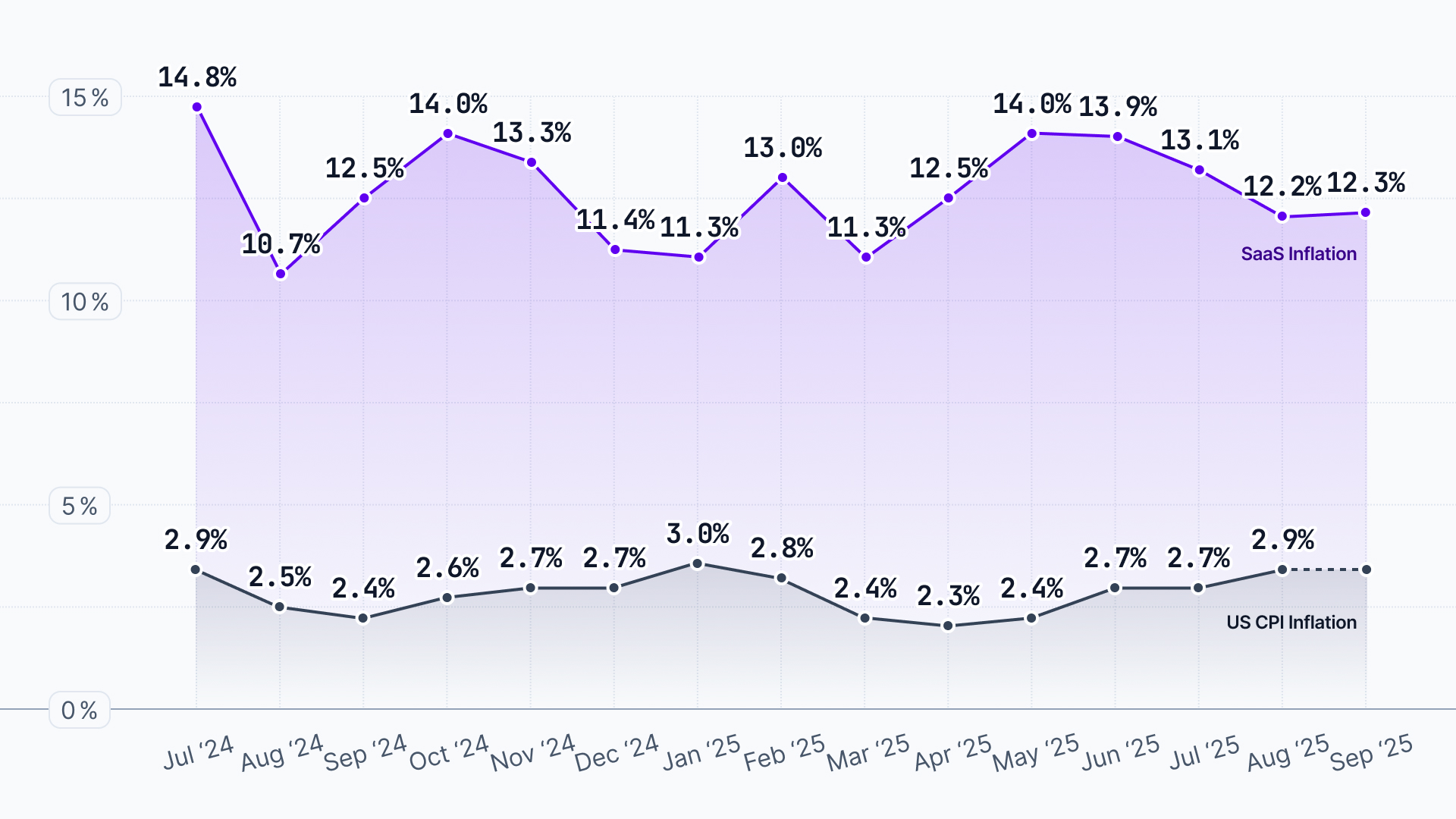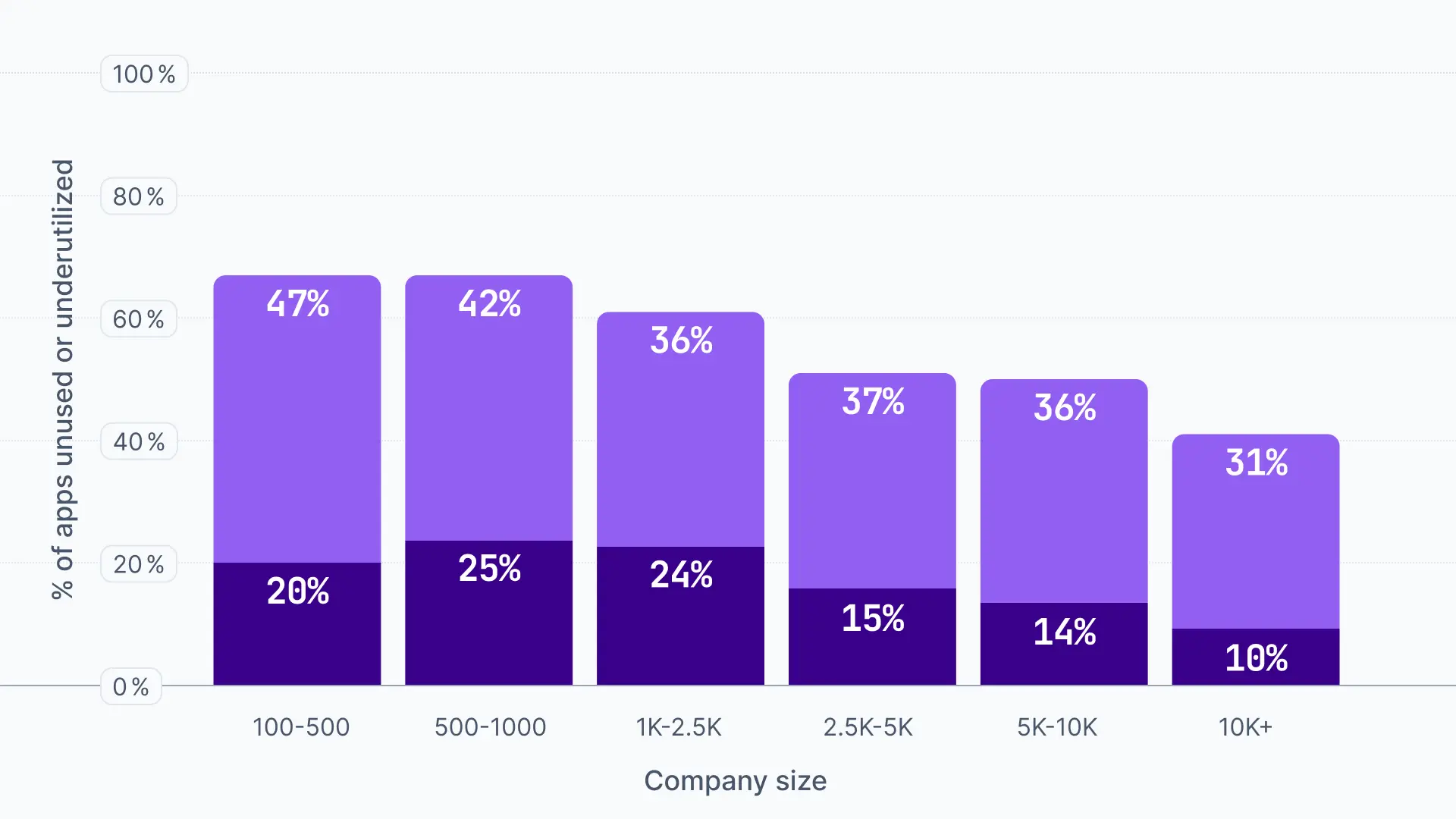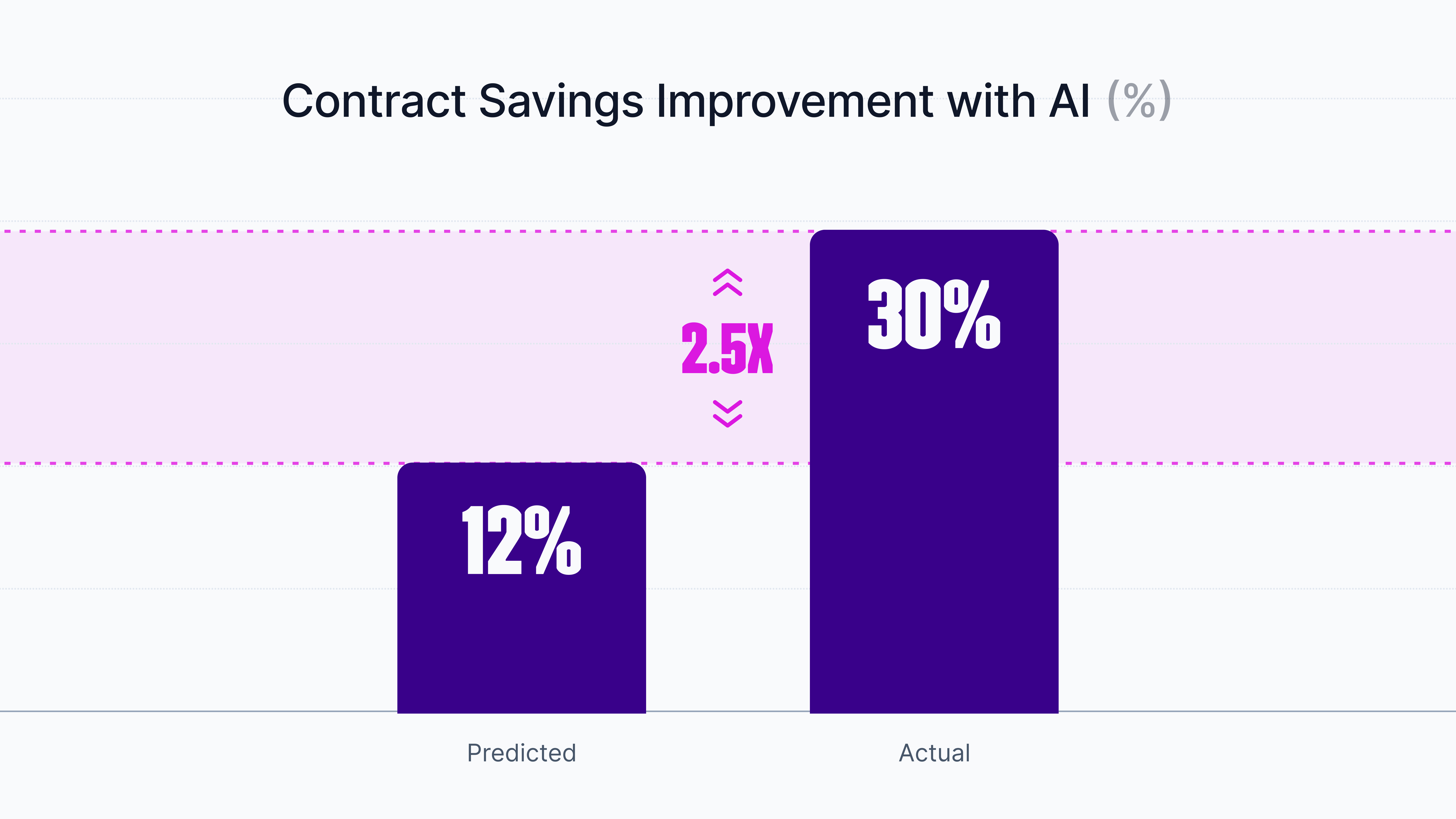Introduction
A great deal is no longer a one-time discount.
It’s about orchestrating perpetual value: negotiating for financial elasticity, anticipating AI-driven consumption spikes, and building contracts that thrive amid market volatility.
This report outlines the new blueprint for SaaS deals in 2026, moving from passive cost avoidance to intelligent, platform-driven financial strategy.
Rising prices
Vertice data shows SaaS inflation is over 12% year-on-year, nearly four times the average consumer rate.
SaaS inflation rate vs consumer inflation rate (CPI)


This is being fueled by:
A 2026 budget that simply carries forward 2025 spend plus X% allowance virtually guarantees unnecessary overspending - but is quite common due to a lack of true SaaS usage data and price benchmarks.
This overspend then feeds a vicious cycle, contributing to the rising SaaS inflation rate.
What you can do:
Vital for eliminating redundant licenses and unnecessary features (or shelfware), ensuring every dollar spent maps to active value.
Ensures that vendor costs scale directly with actual business growth or usage, protecting you from paying for underutilized capacity.
Provides the negotiating power needed to challenge vendor pricing and avoid overpaying compared to industry peers.
Visibility and Control
A lack of visibility leads to immense waste, and 2025 set record levels.
On average, 80% of all SaaS tools are wasted due to duplication, underused (less than 50% usage rate) or completely unused licenses.
And, as the graphic below highlights, this waste is coming from every technology category.
Conduct a full tech stack audit and implement processes that provide real-time visibility over your software assets and their usage.
What you can do:
Catalog and track every known software contract to identify and eliminate redundant, underutilized, or unnecessary licenses and tools.
Manual contract identification and tracking quickly becomes cumbersome, overwhelming and obsolete - especially when organizations undergo significant growth or operational changes. Invest in a solution that can automatically log and track contracts, along with their key terms, dates and usage.
This enables you to eliminate waste, right-size licenses, and make strategic decisions about your entire portfolio.
Crucial analytics
The most impactful negotiation levers are generated by real-time, platform-driven data.
From there, procurement managers and finance leaders can use their experience and knowledge to help qualify what the data says. If the other way around, the data may be interpreted incorrectly to acknowledge a negotiating standpoint that isn't valid anymore.
Plus, real-time data gives you the most accurate, up-to-date information that puts you in the best possible bargaining position.
What you can do:
Leverage internal usage data to understand your true needs and avoid paying for underutilized features.
Combine this with external pricing benchmarks to validate vendor quotes against market rates. This evidence-based approach allows you to negotiate for tailored pricing that aligns cost with business value.
Your contracts must include annual price increase caps to prevent unpredictable cost spikes at renewal.
Furthermore, with the rise of AI and evolving privacy laws, safeguards must extend to data protection.
Move beyond vague SLAs to demand explicit, measurable security commitments, clear data residency requirements, and robust liability clauses that protect you from vendor-caused security failures.
With costs rising, security risks becoming more dangerous, and new procurement technologies changing the game, data now needs to become the foundation of any strategy or narrative.
This means having access to all of your internal procurement data:
- All current and previous SaaS contract information - including prices and renewal dates
- SaaS platform usage rates and license numbers
- All workflow information - including blockers/delays, time spent per request, and average approval times.
Access to this comprehensive data reveals the organization's unique value, utilization patterns, and true requirements, allowing teams to craft a powerful, evidence-based strategy that challenges standard vendor pricing and secures favorable terms far beyond what outdated, anecdotal approaches could achieve.
Data should fuel everything in procurement - and having access to both internal data and external benchmarks is the supercharger.
"To gain flexibility from vendors on their pricing and packaging you need to tell a very compelling story as to how your use case is unique.
The only way you can produce this is basing it on hard, data-backed evidence."
USe AI Yourself
Barely any internal finance and procurement teams are either experienced at negotiating in this new world of AI pricing models, or equipped with data on exactly how these models - or any other pricing trends - are affecting the price they could and should secure.
This is where AI can help (perhaps ironic given the cautionary tales above).
Our research shows that combining human negotiation with deep AI analytical insights leads to a 30% increase in savings over human effort alone - far above the impact on savings that industry analysts such as Gartner and Forrester predicted AI would deliver.
This impact comes from AI's ability - when specifically trained and equipped with the right datasets - to:
... and do so faster and more thoroughly, accurately and creatively than any human team on its own.

To stay competitive, procurement teams cannot afford to ignore or delay AI integration.
What you can do:
Blindly purchasing AI won't work - you need to figure out exactly why you need it, how you would use it, and who will be using it. This not only helps narrow your scope of potential options, but helps prevent overspending too.
Internal datasets need to be in top condition to get the most strategically insightful outcomes from AI. Otherwise they will be based on incomplete or incorrect data - creating poorer procurement outcomes.
Teams that only use AI for process and document summaries will be at a material disadvantage versus those who can act more intelligently with their data.
Getting ahead
SaaS procurement in 2026 is a perfect storm.
Huge price inflation is becoming traditional in SaaS, with the obscurity of new pricing models only adding to vendors' advantage. And this is on top of finance and procurement teams' pre-existing problems of poor internal visibility, a lack of market intelligence and excessive wastage.
But 2026 could in fact be a turning point. While finance and procurement teams have arguably never had so many headwinds in SaaS purchasing, the technology to support them has certainly never been more proven or capable.
Vertice is the intelligent procurement platform built for the modern enterprise. Our agentic workflows, AI insights and unmatched market benchmarking data empowers global businesses across 30+ countries to buy smarter and scale faster.
The single, unified Vertice platform combines:
- Total spend visibility
- The world's largest global dataset of pricing intel and benchmarks
- Custom workflows powered by agentic AI
- Detailed and holistic contract and vendor management
- Expert negotiation services
Vertice processes over $10 billion in software spend and has a track record of delivering 20% savings and halving procurement cycles - the perfect partner to help you achieve the perfect SaaS deal in 2026 every time.



.jpg)

.jpg)
































